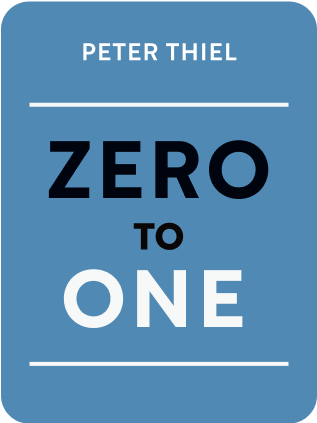

This article is an excerpt from the Shortform summary of "Zero To One" by Peter Thiel. Shortform has the world's best summaries of books you should be reading.
Like this article? Sign up for a free trial here .
What can PayPal history teach you about creating a startup? Can it help you develop your own startup strategy?
In PayPal history, the company was started in a niche market. Later, the company developed into a profitable, widely-trusted brand. Read about PayPal history and how it’s become so successful.
Eccentric Founders of PayPal
The six people involved in the PayPal launch were eccentric: They had unconventional backgrounds and sometimes strange interests (four of them built bombs in high school). However, for the tech world, PayPal’s founders weren’t that unusual: tech entrepreneurship and eccentricity seem to go together. This can be mostly a strength if it doesn’t get out of hand.
Many founders have traits that are both extreme and paradoxical. For instance, they may be:
- Cash poor but millionaires on paper
- Obnoxious but also charismatic
- Insiders and outsiders
- Both famous and infamous
Sometimes founders purposely exaggerate certain traits, or their admirers exaggerate them to build a myth. Other times, founders are just “naturally” extreme—they’re unusual from the beginning and seem to get more unusual as life goes on. You can see some of these in PayPal’s origin.
PayPal History and Launch
In this insane environment, Thiel recalled feeling “scared out of my wits” while running PayPal in late 1999. People readily believed any grandiose idea; acting rationally seemed crazy.
Thiel and his co-founders nonetheless had a big vision for PayPal. They followed the thinking of the time—trade short-term profit for growth—but they did it in a calculated way and managed to pull off a miracle before the bubble burst.
The PayPal origin idea was to create an internet currency to replace the dollar. The first version of PayPal history allowed people to send money from one PalmPilot to another. But not enough people had PalmPilots for that to be viable. Instead, since everyone had email, the company created
a way to send payments via email. It worked well, but expenses were growing faster than customers.
Striving for at least a million users, the company increased its costs by paying people $10 to sign up and $10 for each referral. To Thiel, the cost made sense because PayPal history was on a path to profitability by charging users a transaction fee. But they needed to become profitable quickly.
They found eager investors after an admiring Wall Street Journal story suggested PayPal was worth $500 million; they moved quickly to secure financing, and shortly thereafter, the dot-com bubble burst.
Building a Monopoly: A PayPal Strategy
Also critical to a monopoly startup’s success is how you choose and expand your market. Start with a small market because it will be easier to dominate than a large one.
But make sure that your intended market really exists. During PayPal’s launch, its first market—PalmPilot users who wanted to send money to each other—was essentially nonexistent. PalmPilot users were scattered around the world and had little in common, so not many of them needed to send money to each other.
After dropping that idea, PayPal historically targeted eBay auctions and found success by serving 25% of a few thousand high-volume power sellers who really needed a way to receive payments online. It’s better to focus on a small number of customers involved in a common activity or concentrated in a particular environment with no competitors than to reach for millions of disparate users.
Sometimes entrepreneurs think they’ll profit by getting a small share of a huge market—for instance, 1% of a $100 billion market. But even if you get a foothold in the market, as a small player, you won’t make money because competition will eat up your profits.
Don’t Be a Disruptor
Disruptive companies also get into losing battles. For example, in 1999, Napster tried to disrupt the music recording industry but ultimately ended up in bankruptcy.
While some might view PayPal as disruptive, it didn’t challenge an existing company. PayPal took some business from Visa initially, but it actually ended up helping Visa by expanding the market for online payments overall. PayPal’s origin team created a positive dynamic, while Napster aimed to eliminate an industry.
PayPal History of Teamwork
The first team that Thiel built became known as the “PayPal Mafia” because so many early employees established lasting relationships and went on to help each other start great new companies. Among them were seven new companies worth more than a billion dollars each: LinkedIn, Yelp, Yammer, YouTube, Palantir, Tesla, and SpaceX.
Instead of focusing on office amenities, Thiel focused on hiring compatible employees and fostering a strong sense of community and commitment to a goal everyone was excited about. PayPal’s culture, in effect, spread into new companies.
Instead of the professional view of a workplace where employees check in and out, simply exchanging hours for a paycheck, work relationships should extend beyond work and also be long-lasting. In fact, if the considerable time you spend at work doesn’t build longer-lasting relationships, you haven’t used it well.
Stronger relationships result in better work and help people build successful careers beyond PayPal’s launch.
Viral Marketing
Viral marketing is the cheapest and fastest way to sell a product—by using it, people encourage additional users to participate. Facebook and PayPal both grew quickly through viral marketing. Every time someone shared with a friend or made a payment they pulled more people into the network.
Viral marketing or distribution can trigger exponential growth. The effect should be seamless and fast. YouTube videos or internet memes can be seen by millions in a very short time: In just seconds, people see a cute post, feel a glow, and share it.
PayPal history started with only 24 users (employees). But the company achieved extraordinary growth through a form of viral marketing by paying people to sign up and refer their friends. In a few months, PayPal had hundreds of thousands of users. Because they charged customers a transaction fee, revenue exceeded their customer acquisition cost.
The company that’s first to dominate a key market slice with viral capability will ultimately dominate the entire market (be the last mover that no one else can match), if it expands judiciously. PayPal first dominated a key segment—”power sellers.” Once the company had corralled these intense users and began expanding, no imitators could catch up.
PayPal history shows that a company is best served by creating a specific product that clearly serves consumer needs. PayPal history also shows the benefits of expanding and securing your place in the market.

———End of Preview———
Like what you just read? Read the rest of the world's best summary of Peter Thiel's "Zero To One" at Shortform .
Here's what you'll find in our full Zero To One summary :
- Why some companies genuinely move the world forward when most don't
- How to build a company that becomes a monopoly (and why monopolies aren't bad)
- Silicon Valley secrets to selling products and building rockstar teams






